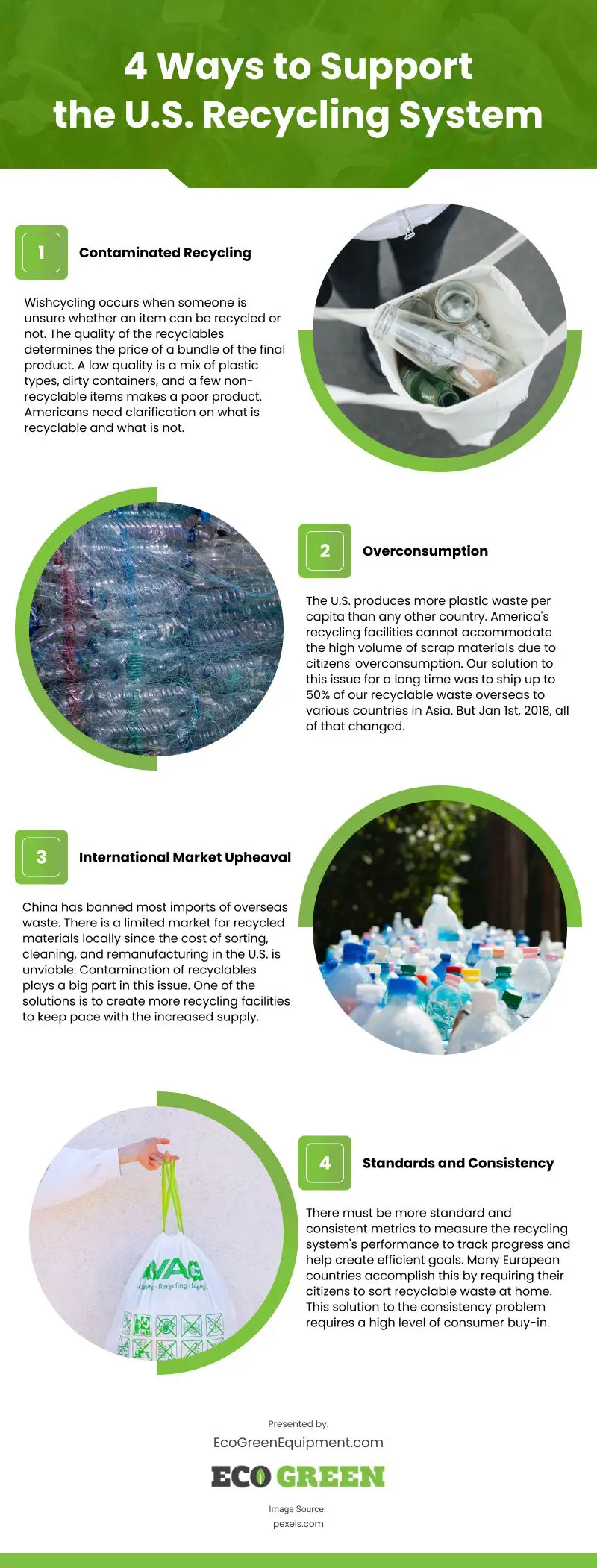
Everyone is aware of how to recycle, regardless of whether they spend the time to do so. Wholly unknown to the public are the inadequacies of the existing system, the ways in which it might be improved, and how the US’s overall recycling system functions. The present national recycling system is now facing four major challenges. Each of these obstacles can be overcome by an individual in some way.
Obstacle 1: Tainted Recycling
Despite having the best of intentions, wishcycling poses one of the biggest problems for the recycling sector. When someone isn’t sure if something can be recycled or not, wishcycling happens. They put it in their recycling with the hope that it would be salvageable.
Why does this matter? The cost of a bundle of the finished product is determined by the quality of the recyclables. Consider plastics as an example. A product of low quality is created by combining several types of plastic, filthy containers, and a few non-recyclable materials. Processors will send the entire bundle to a landfill if it is excessively polluted. Wishful recycling really has the opposite impact from what was intended—it decreases the amount of recycled goods. Americans need more information on what is and is not recyclable.
Obstacle 2: Overconsumption
The huge number of scrap materials generated by Americans’ excessive consumption exceeds the capacity of the country’s recycling facilities. In actuality, the United States generates the most plastic garbage per person in any nation. We dispose of it in the garbage while China and other countries produce more plastic for initial use. The calculation is easy. Our trash production exceeds the capacity of our recycling facilities to sift, treat, and remanufacture it. For a long time, we dealt with this problem by exporting up to 50% of our recyclable rubbish to other Asian nations.
Obstacle 3: International Market Disruption
China imposed a ban on the majority of trash imports on January 1, 2018. Unfortunately, there is little local market for recycled materials since it is not economically feasible to select, clean, and remanufacture products in the United States. The market collapses when the losses surpass the profits. For a commodity to be valuable, it must be scarce. Recycling-needed waste is common. Recycling material contamination is a significant factor in this problem.
Obstacle 4: Criteria and Consistency
To track development and aid in setting effective goals, there must be more uniform and consistent metrics used to assess the effectiveness of the recycling system. To do this, several European nations mandate that their residents separate recyclable rubbish at home. Instead of one recycling bin, there will be four or five bins for glass, paper, hard plastics, and cans. It takes a lot of user support for this consistent approach to work.
How can you support?
Learning what may and cannot be recycled is the most important thing you can do to stop contributing to contaminated garbage by recycling.
How significant is it in reality? When I put something in the recycling bin, is it really recycled? How can I limit the amount of plastic garbage I produce? Researching these issues and sharing what you learn with peers can help change America’s culture of inadequate recycling and excessive consumerism.
source: https://ecogreenequipment.com/4-obstacles-to-strengthening-the-u-s-recycling-system/
Comments
Download this infographic.
